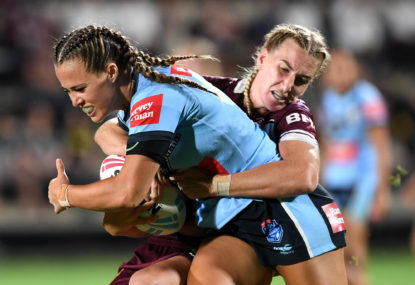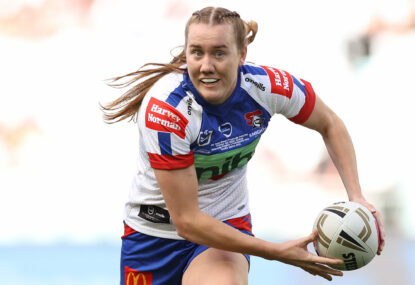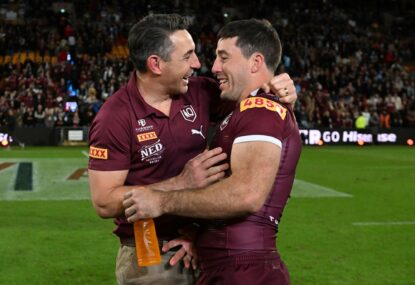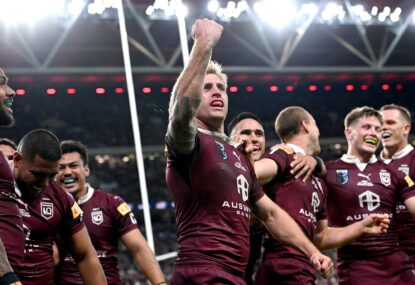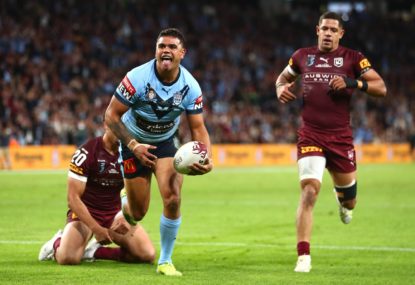Can you quantify how much a guy ‘gets Origin’? Do numbers matter, when Queensland always start as outsiders and promptly win anyway?
Billy Slater, in his position as Queensland coach, has never affected the air of a man who wants to talk about data, or tactics, or anything really in relation to the nuts and bolts of how rugby league matches are won.
Origin is often thought to be a game beyond tactics, and Slater’s attitude to it last year, and subsequent success in coaching the Maroons, backs that up. It’s not really like any other game and perhaps should be treated as such.
In a lot of ways that is true, but in other ways, it’s 17 NRL players facing 17 other NRL players and we can use a lot to back up who those chosen 36 should be.
We covered who the stats would pick for Brad Fittler’s Blues yesterday, so catch that here, but it’s worth reiterating the ground rules: we’ll not be doing a 1-17 for each team, because most of it is obvious or pointless, and there’s a few key calls that can’t really be made using numbers, because the data sets aren’t comparable.
If you’re coming here for empirical thoughts on Reece Walsh v Kalyn Ponga, you won’t find it: they play different positions at club level now, so it’s not really a worthwhile exercise comparing their stats.
For what it’s worth, Queensland seems to value loyalty more than anywhere outside of a Boston gangster movie, so it’ll be Ponga barring injury anyway. You heard it hear first, bro.
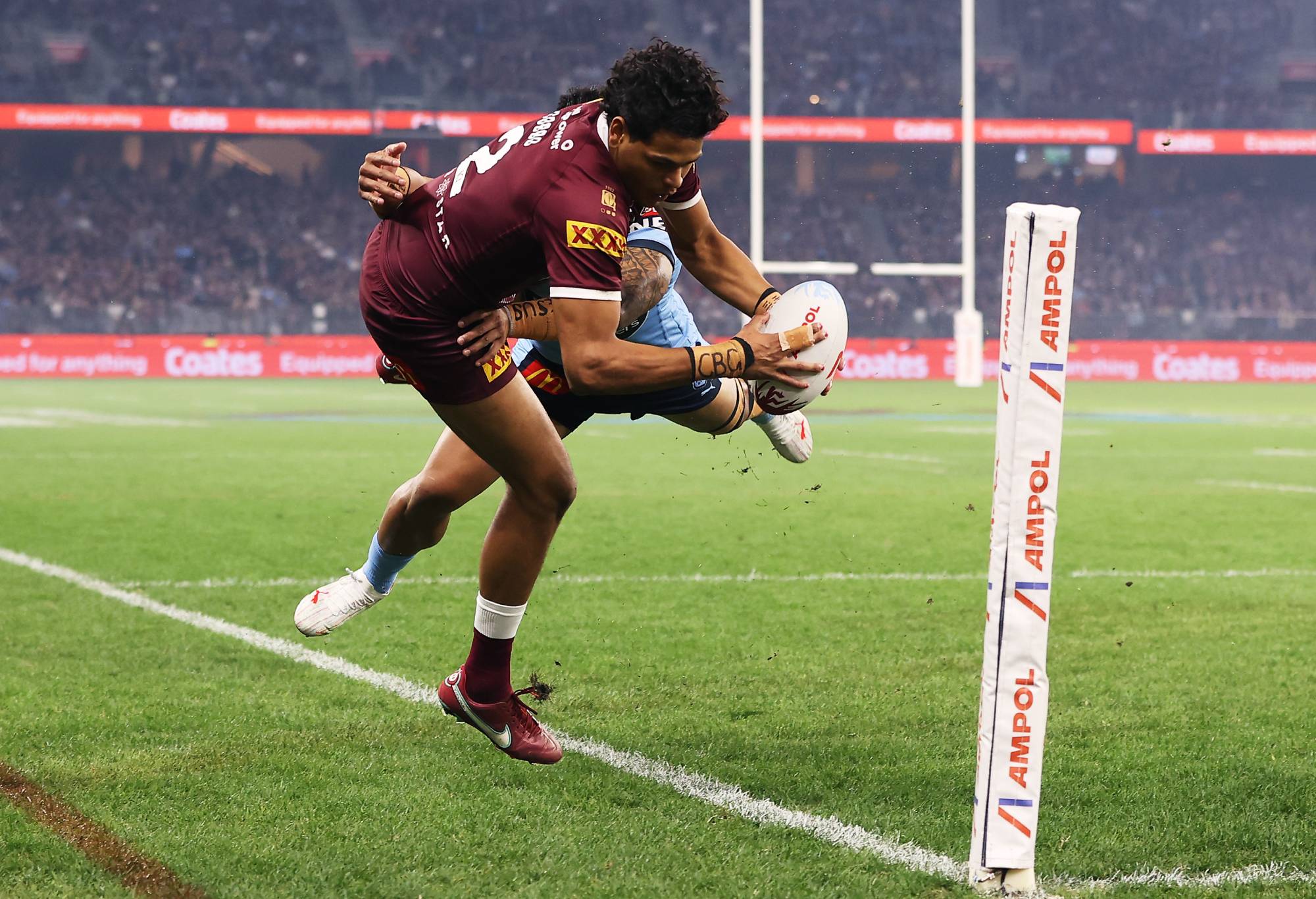
(Photo by Mark Kolbe/Getty Images)
Outside backs
Given that we’ve parked the fullback, let’s start with the wings. Selwyn Cobbo is going to be one of them, that’s for sure, but the other is wide open.
Xavier Coates, Murray Taulagi and Corey Oates all got a game last year, and you could now throw Hamiso Tabuai-Fidow, who has been playing at fullback but could feature on a wing into the mix.
In fact, the whole outside backs argument is confused. Dane Gagai has a mortgage on a centre spot, but there’s an argument that he’d be better one further out these days, while Val Holmes has also consistently played his best rep footy as a winger rather than a centre.
Let’s assume Holmes and Cobbo are one edge: what do you do with the other?
Creatively, Gagai makes a solid case for inclusion on a wing, with consistent metres and an ability to bust tackles, but loses points for the centre role given his ongoing decline as a defensive force. Among centres, he’s the worst in the league of anyone to play significant games in terms of line break causes, and as far as missing tackles goes, he’s second worst.
Origin Gagai can be different – his defensive showing in Game 1 last year was like an 80-minute argument in favour of missed tackles as a junk stat – but father time waits for no man and NSW would love to put Latrell Mitchell right up against his old mate.
Stick him on a wing, however, and we might be talking. If Oates is injured, Taulagi shades Coates on the numbers, with considerably better yardage work and equally poor defensive showings. The upshot of any argument might be that neither are that good and Gagai is likely the best option outside.
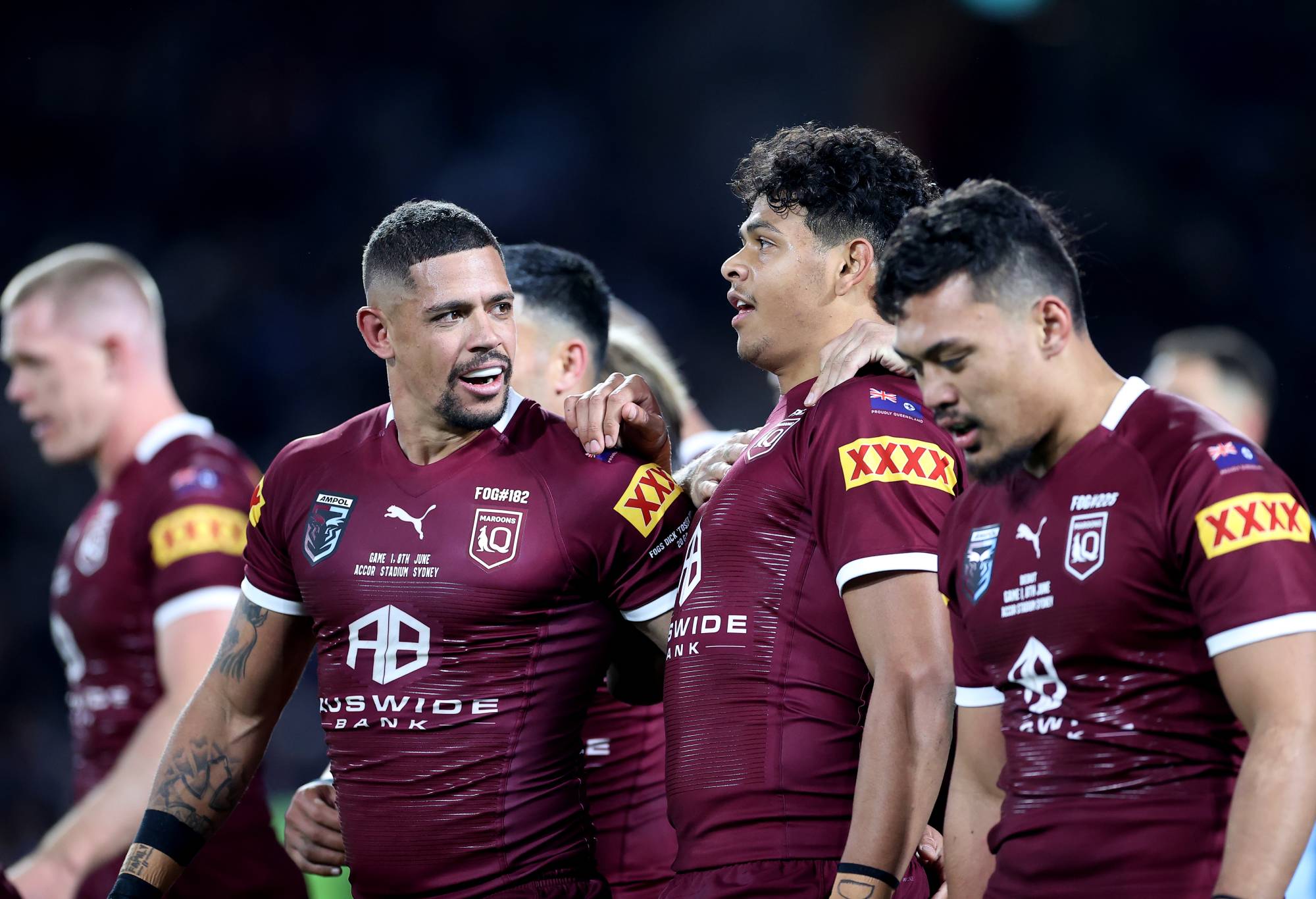
(Photo by Mark Kolbe/Getty Images)
Another name in the mix could well be one of 2020’s “I Can’t Believe They Played Origin” class, Phillip Sami. He’s the second ranked Queenslander on the yardage list – behind Cobbo – and sits second second in the tackle breaks list behind the unfortunately Kiwi Greg Marzhew.
If Queensland want someone like Gagai in the centres, the Titans man could be the answer. Then again, NSW would look at an edge of both of those two together and lick their lips.
If he’s going to play, centre seems the best place to put the Hammer. Tabuai-Fidow’s numbers aren’t easy to compare given he’s exclusively played as a fullback this year, but added creativity he’s developed with ball in hand certainly supports a case that playing one inside is best.
Just like the options above, however, he doesn’t offer much without the ball and would immediately be spotted up by the Blues. Remember why the Cowboys didn’t give him a game.
The best option if Slater wanted a specialist centre would be Isaiah Tass. Born in Mackay, he lags a little in yardage but more than makes up for it in solidity – 91% tackle efficiency, half as many line break causes – and one-on-one tackling.
A combination of Tass and Gagai is what the numbers say, with Taulagi shading it if Slater wants to follow the data. In reality, back him rushing Corey Oates to health and picking him.
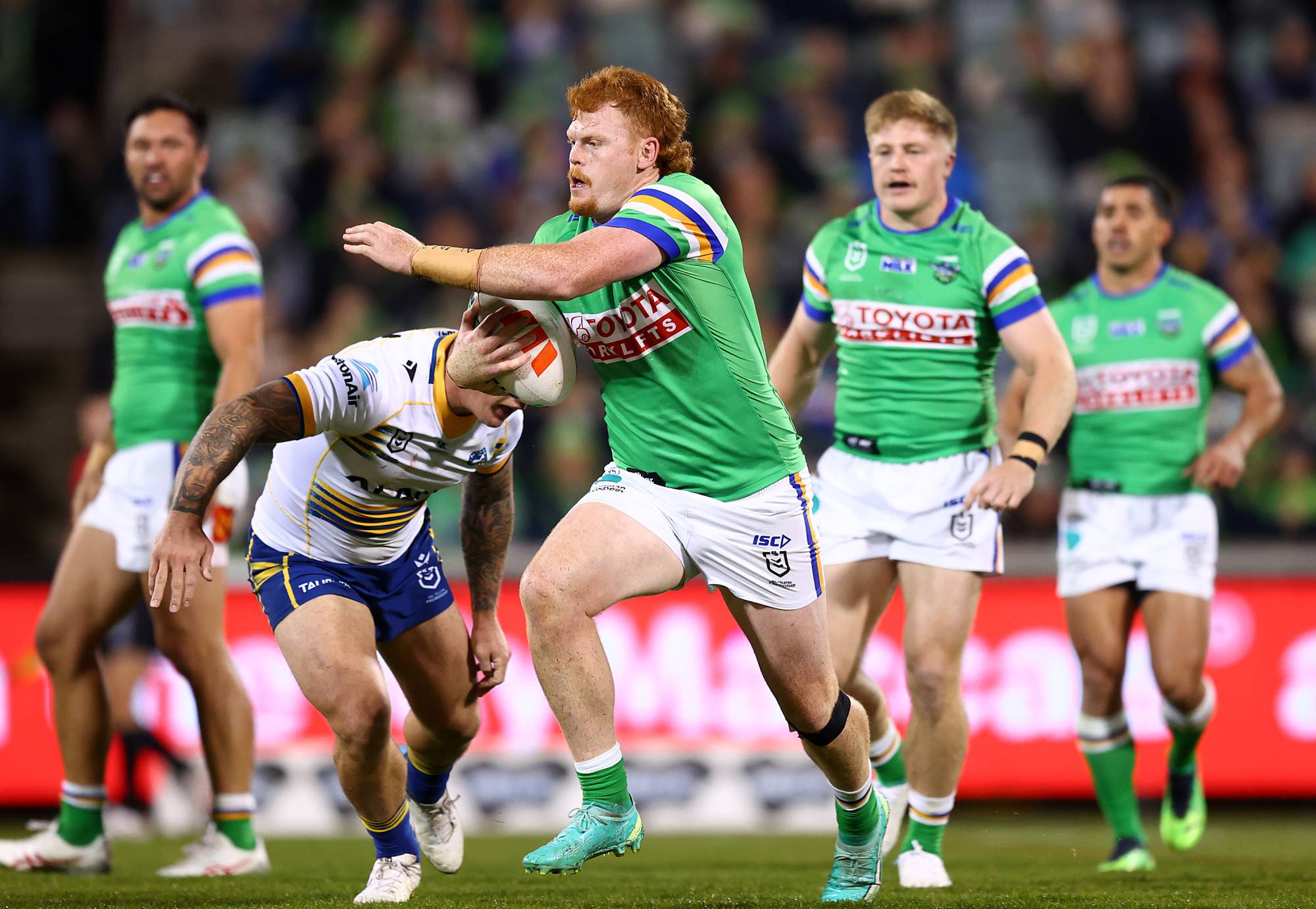
(Photo by Mark Nolan/Getty Images)
Forwards
This time last year, the future of the Maroons back row seemed secure, with Jeremiah Nanai the long-term option alongside Kurt Capewell.
Now, all bets are off. Nanai has fallen off a cliff in form and is suspended right up to Game 1, so surely won’t play, while for all that the Broncos have been good, Capewell has underwhelmed.
His running is way down – 75m a game from a bloke playing 80 minutes – and he currently has the worst tackle efficiency of any regular backrower in the NRL, as well as being the fourth worst for line break causes.
Indeed, the top ten in that category is horror reading for Queensland, with Felise Kaufusi top of the pile, Nanai second, Capewell seventh and David Fifita tenth.
We remember Kaufusi as putting on huge shots, but his bread-and-butter tackle rate has gone way down since joining the Dolphins.
The clear standout is David Fifita, who currently attacks and defends the best of any edge option the Maroons have. Beside him, Slater will certainly go for one of Kaufusi and Capewell – with the other on the bench – but the numbers say he shouldn’t.
With Reuben Cotter likely to return as a middle, it gives Jai Arrow the chance to feature in a starting role as an edge, which the stats back up.

Jai Arrow of the Queensland Maroons. (Photo by Bradley Kanaris/Getty Images)
His numbers are little noisy given time spend as a prop, but his natural position is edge and the Souths man presents a clear case for more minutes in the back row: more metres, better tackle efficiency, fewer breaks.
The middle is a little more settled, with Tino Fa’asuamaleaui and Pat Carrigan certain to start and, given the retirement of Josh Papali’i from Origin duties, Lindsay Collins likely to step up to his starting berth.
Collins more than deserves it, having been the pick of a poor Roosters pack – the only question would be over his ability to do it for longer minutes in the middle with Payne Haas and Junior Paulo, who certainly will go big.
The bench forward spots are wide open, with two clear candidates to fill them: Corey Horsburgh and Moeaki Fotuaika.
Horsburgh gets all the vibes points – being a big, angry, aggressive ginger will do that – and also backs it up with hefty involvement rate points.
Big Red is up there with anyone in terms of actions per minute on the field, cranking out a run every three minutes and a tackle every two minutes that he’s out there.
In the white heat of Origin, a guy who gets about a lot and come with a whole lot of statistically immeasurable crazy is a plus point.,
Fotuaika is more set-and-forget, but no less impressive. If Slater wants a bloke to start and absorb so he can hold Collins back, or to pick up from the Roosters man when he goes off, look no further.
The Titans prop leads Queenslanders in the NRL for metres per run and is second behind teammate Tino in total metres, while also possessing an offload.
On the other side of the ball, his tackle efficiency isn’t great but he does get to a lot of tackles in the first place, which tends to be the more important aspect among middles, where the speed bump can be as important as the stop sign.
His line break causes are a worry – a problem shared by Collins – and would interest James Tedesco around the ruck, but at least some that might come from being surrounded by 12 other Gold Coast Titans players. Again, with middles, this can be a noisy stat.

(Photo by Mark Kolbe/Getty Images)
Of the returning options, there are a mixed bag. Christian Welch missed 2022’s series entirely with an Achilles injury, but has been (understandably) slow to start in 2023 after a year out.
His defensive efficiency remains an issue, though like Fotuaika, he makes up for it in volume. His runs per carry are also outside the top 50 for NRL props.
Tom Flegler also featured in 2021, but not 2022, and could be in line for recall. His stats are impacted by playing third fiddle to Haas and Carrigan at the Broncos, but as a bench option for Queensland, it’s clear he could do a job.
Per minute, Flegler matches Fotuaika and Welch, while also bringing cohesion with his Broncos teammate.
Tom Gilbert is also an option, but would come a comfortable fourth behind those three, though he does bring standout defensive skills. Only J’Maine Hopgood makes more tackles among Queensland-eligible middles in the NRL.
Hopgood himself has been touted as an option, and would be an interesting addition, especially if Slater goes away from the Horsburgh/Collins archetype and leans into small ball.
The rookie has ball-playing skills that nobody else in contention can match – 2.5 offloads per game, plus multiple line break assists – and outranks Horsburgh in yardage, too.
The question with Hopgood would more be tactical: his utility at Parramatta has often waned as the game has gone on, with key defensive errors late in halves as he tires.
That might be due to longer minutes expected from Brad Arthur, who often errs in interchanges, and could be ironed out by Slater if he used his man in shorter bursts.


































































































